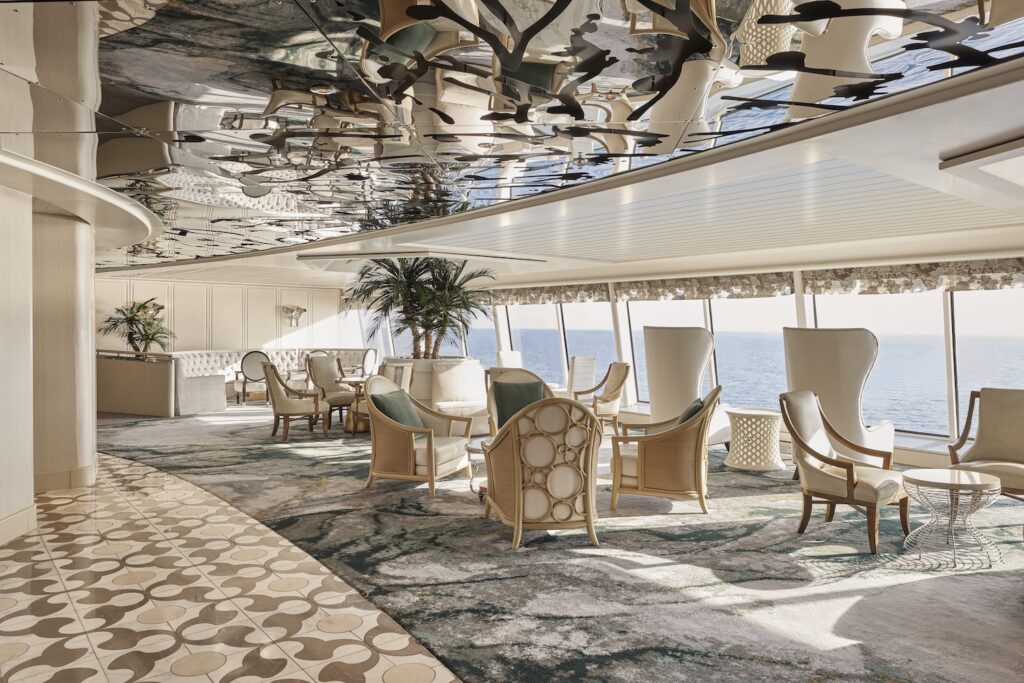Fancy a cuppa in Glasgow? Then stir up history, add a sweetener to the experience, and leave with more than tea and cake to savour in the center of this vibrant Scottish city.
I’m visiting the historical tea rooms, Mackintosh at the Willow. The only trouble with my visit? The dilemma of which of the 32 types of tea to choose to accompany my three tiers of plates overflowing with sweet and savoury delights.
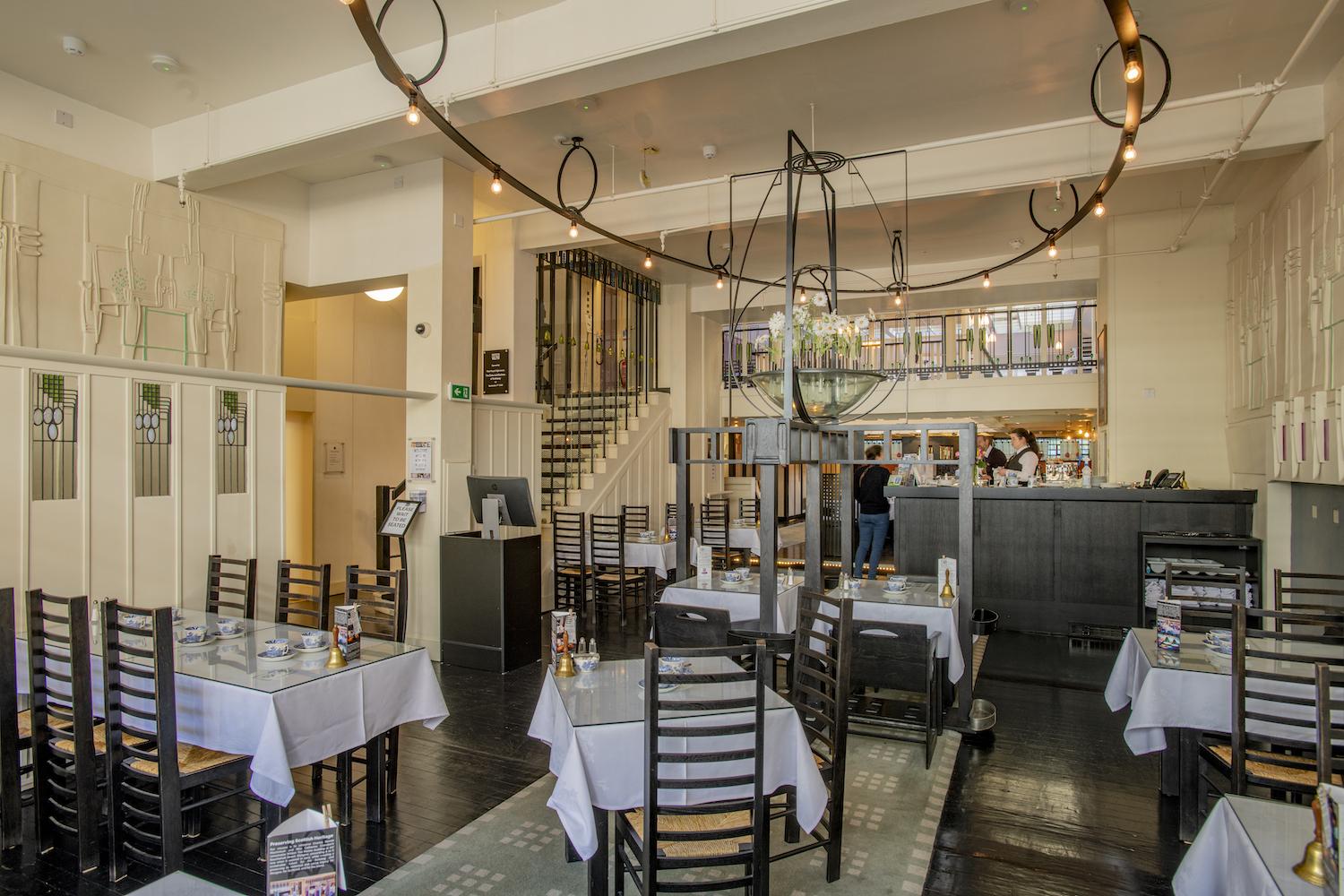
Book a table and a tour at Glasgow’s Makintosh at the Willow
The Rise of Café Culture
Café culture, so central to our society today, was practically non-existent until Glasgow helped to make it fashionable. The city was a major centre for importing and blending tea and coffee back in 1851 when tea was imported from China. Once the taste for tea became established, Glasgow tea rooms took off and by 1897 the number of tea houses in the city was at its peak.
The tea story began in 1903 when Charles Rennie Mackintosh designed The Willow Tea Rooms Building for Miss Cranston, one of his most important and loyal patrons. Miss Cranston’s oldest brother, Stuart, a blender of dry tea, set out tables for 16 customers in his sample room in Glasgow’s Queen Street.
A cup of tea for tuppence, (bread and cakes extra) launched Britain’s first tea rooms, with I imagine a somewhat more limiting menu than the multi-paged tome I’m scrolling through.
Mackintosh is Scotland’s most celebrated architect and designer of the 20th century, and today his work is celebrated around the world, but especially in his hometown of Glasgow, where he left beautiful and lasting marks all over the city.
The Temperance Movement
The Temperance Movement, a social, religious, and political movement that began in the early 19th century to discourage or prohibit the use of alcohol, helped promote café society. Women benefited from the respectability of alcohol-free tea houses, which allowed them to go out in public without a chaperone.
Teahouses, were, however, promoted to men with incentives such as billiard rooms, telephones and telegrams for those gentlemen attending the Exchange Courts Banks and Warehouses.
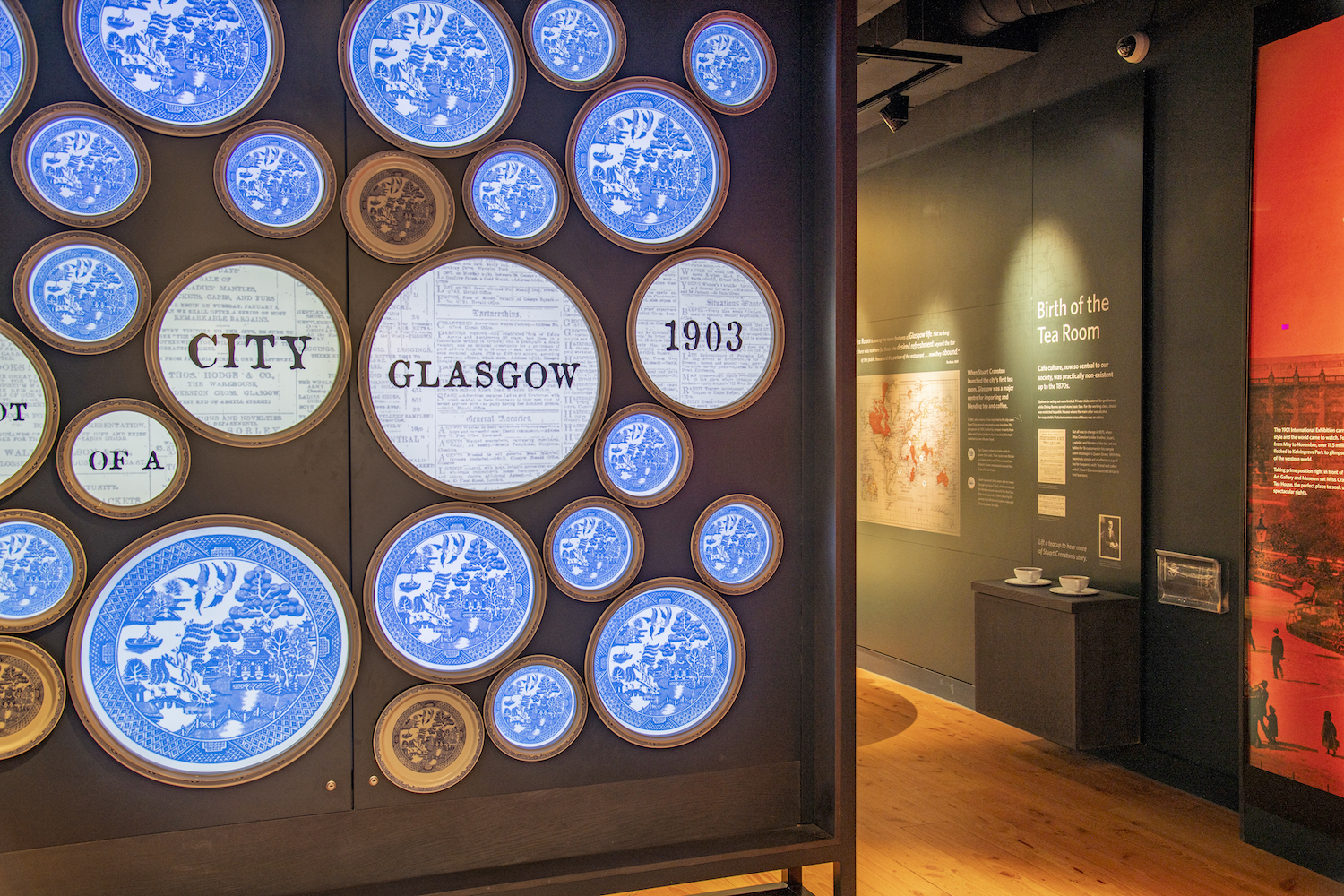
This A-listed building is Makintosh’s last surviving tea room, which opened in 1903
The Makintosh Touch
Makintosh at the Willow seats up to 200 people across three floors, with several eye-catching spaces, each with its own character and design. The Front and Back Saloons are on the ground floor and feature an impressive canopy, skylights and linen wall panels – all designed by Mackintosh. The Gallery is on the mezzanine. The famous Salon de Luxe, a glittering jewel of the venue, can be enjoyed on a tour that must be booked in advance.
Here at the Mackintosh at the Willow, the tea house’s eponymous artist left his touch everywhere, from the stencilled friezes of female figures surrounded by roses that decorate the rooms for women to the cutlery and server dresses. You’ll also see his aesthetic in the high-backed chairs painted in silver, dishes with borders in blue willow leaves, grey carpets, upholstery in purple, mirrors, and enamels mainly in pink and mauve tones, and the famous door with stained glass. T
ogether, these elements create a bright and elegant ambiance, which was fashionable in its day.
The Salon de Luxe is one of the most precious interiors that Mackintosh ever designed and still has the original pair of stained-glass doors.
The Gallery on the mezzanine overlooks the back salon and has a fireplace, and an open-beam ceiling that allows light to flow through.
The restoration has retained Mackintosh’s design of conical columns, balustrades and painted wood in white and the set colour scheme.
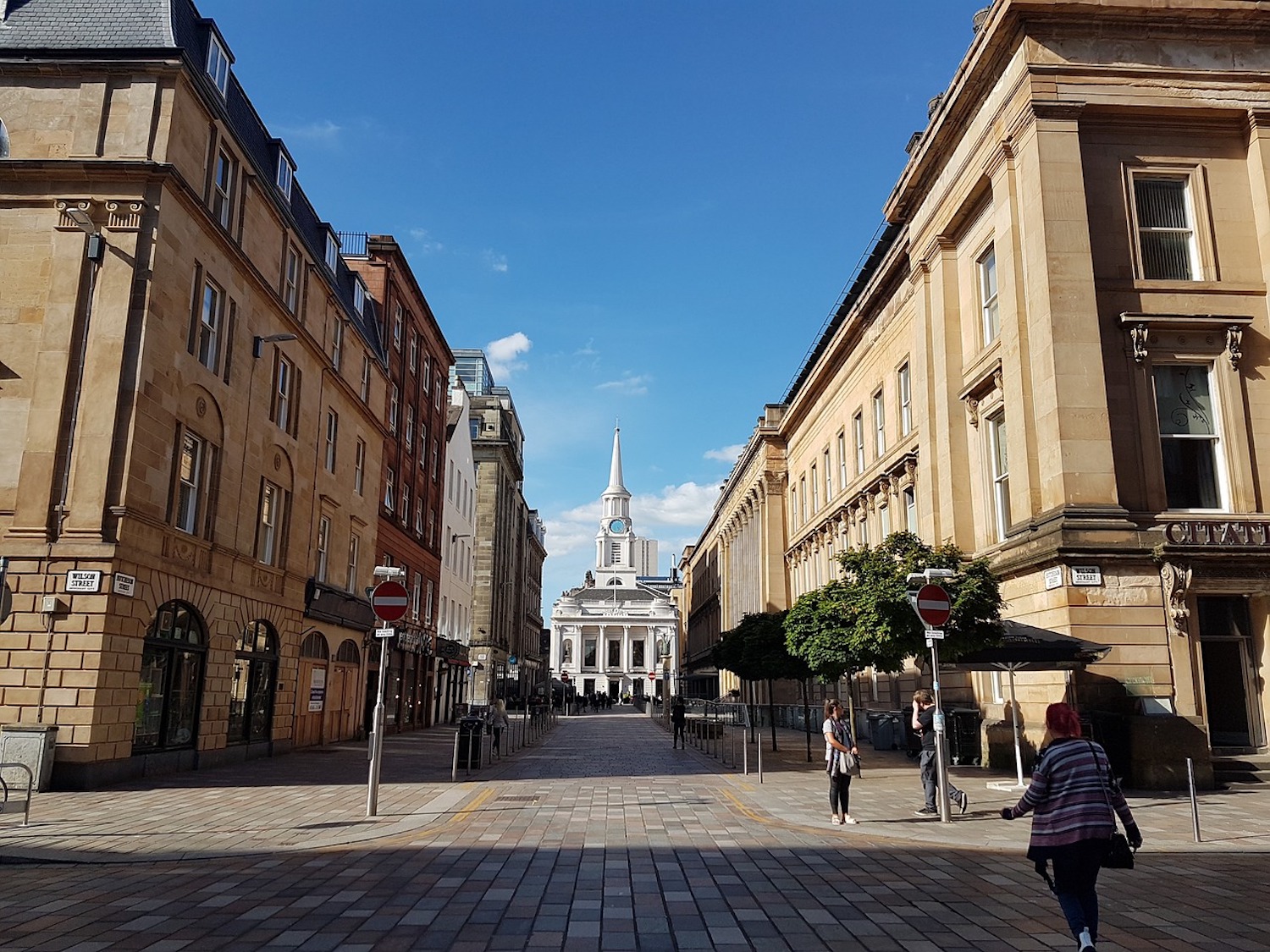
Glasgow is a port city on the River Clyde, with a diverse art scenes, vibrant nightlife and music scene, and Victorian architecture (photo courtesy of Pixabay)
Interactive Exhibition & Guided Tour
Book a guided tour to really appreciate this place’s beauty and design.
The exhibition is over two floors, and light levels increase and change from darker to lighter treatments as the visitor transitions from Victorian Glasgow through to the modernity of The Willow on the first floor, where whitewashed timber holds the displays.
Mackintosh’s original leaded glass doors of the Salon de Luxe are displayed in a minimal floor-to-ceiling case. The displays throughout incorporate films with experts, tactile and handling material, replica pieces and hands-on interactives.
The tour covers most of the main spaces within the building, highlighting the work undertaken by the restoration team, the interiors within, and how the building relates to other Mackintosh works. It lasts 45 minutes and it’s advised you book in advance.
But Back To The Tea
It was a difficult choice, but I finally selected Black Forest Gateaux with the description: “Inspired by a rich and scrumptious cake, this blend brings together layers of carefully selected black teas with fruit pieces and luxury vegan chocolate.”
It didn’t disappoint and it tasted as if I were drinking cake.
Tea flavour runners-up included Russian Caravan: “This smokey Lapsang blend evokes the historic caravan trails that would have brought tea from China to the European markets” and 1903 blend: “crafted exclusively for Mackintosh at the Willow by Pekoe Tea of Edinburgh, the 1903 Blend calls back to the history of the tea trade. A light afternoon blend containing teas from Sri Lanka and China and decorated with rose petals in a nod to the rose motif found in the works of Charles Rennie Mackintosh.”
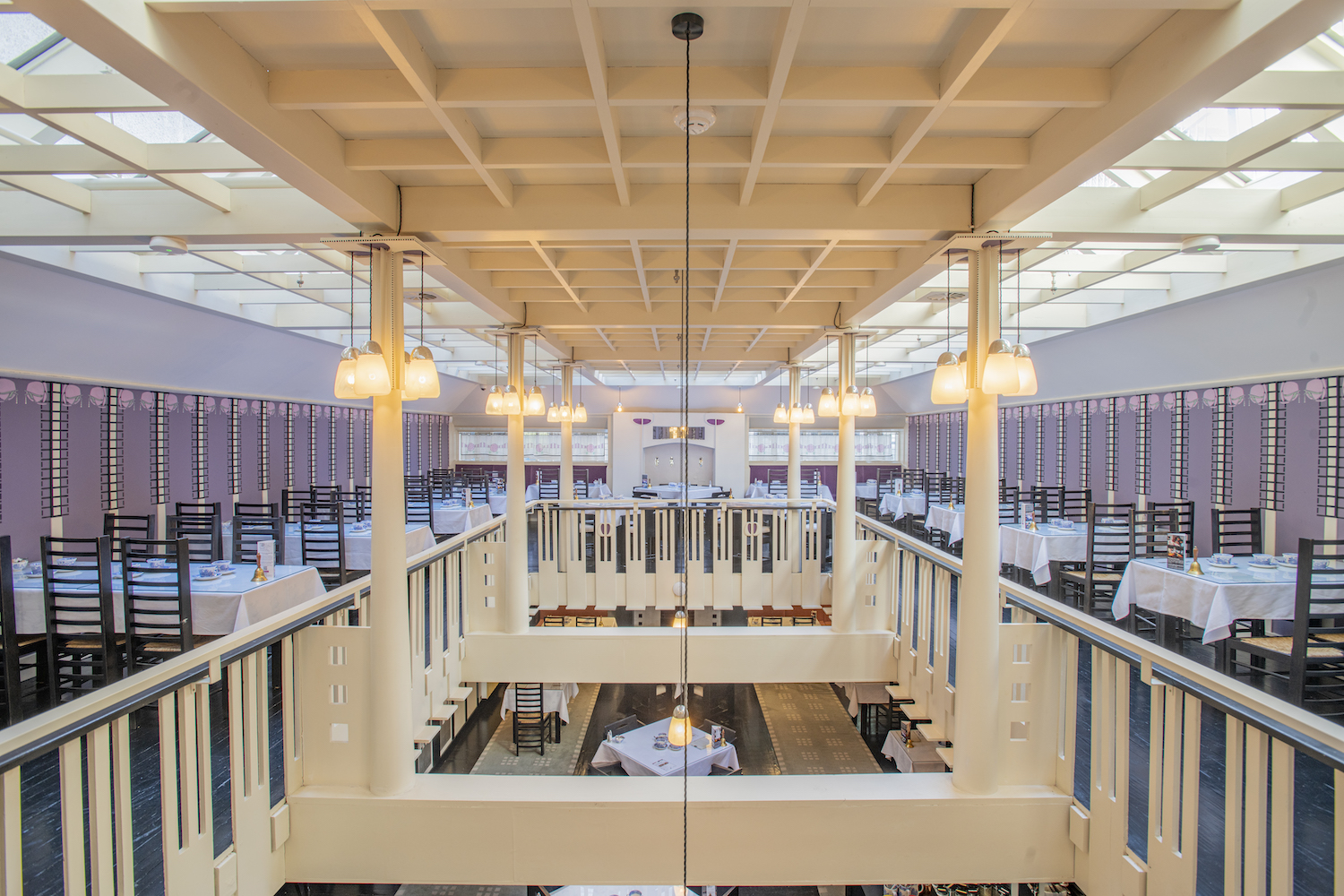
The tea rooms were first opened by Miss Cranston in 1903 and were designed by Glasgow-born Charles Rennie Mackintosh
The National Trust of Scotland
This A-listed building is his last surviving tea room, which opened in 1903. Miss Cranston and Charles Rennie Mackintosh took the concept of the tea room to new artistic heights. The original venue has restored the artistic integrity of the building as a sustainable business to become self-funding and operate as a genuine social enterprise.
Since January this year, the National Trust has acquired it as one of their many precious sites. It’s a must when in Glasgow.
The Mackintosh at The Willow operates as a not-for-profit social enterprise, a subsidiary of the registered charity ‘The Willow Tea Rooms Trust’ and is in partnership with the Prince’s Trust.
**
Mackintosh at the Willow (the Original Willow Tea Rooms Building)
215–217 Sauchiehall St,
Glasgow
Tel: 0140 204 1903
**
Author bio: Jane Wilson, The Wellness Traveller
Find more travel inspiration at BeSeeingYou
Photos courtesy of PeopleMakeGlasgow.com, unless noted





